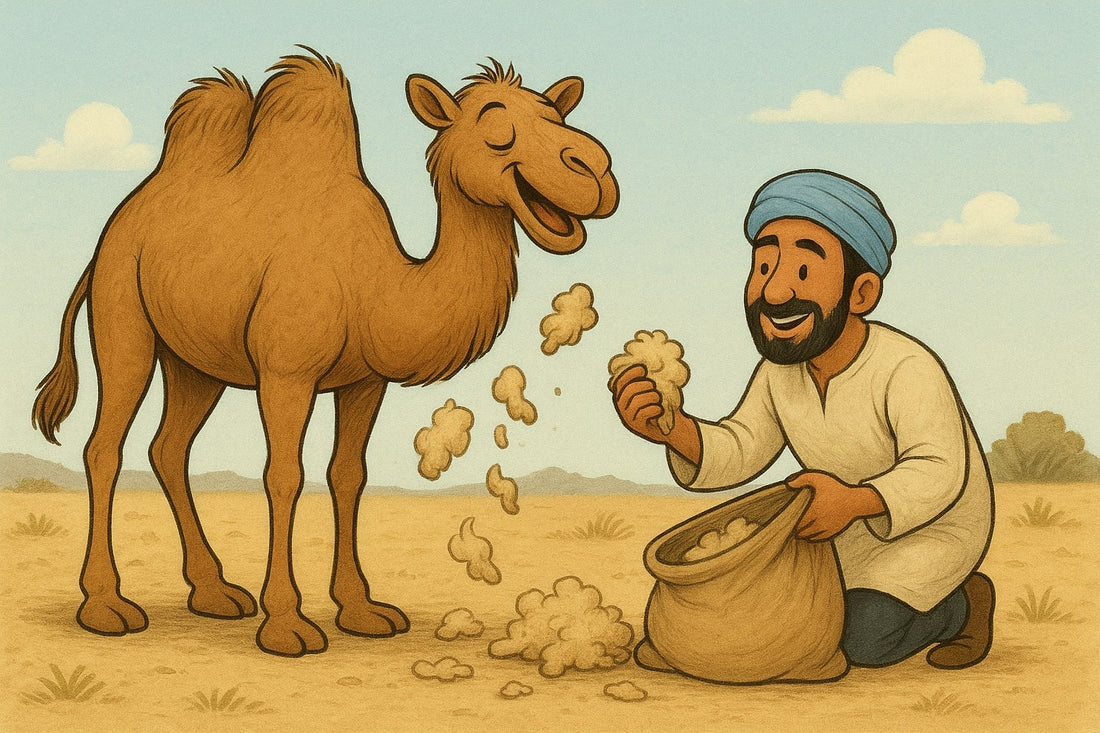
Why is camel wool a special choice?
Share
Natural, warm and obtained in a more humane way
When we think of warm blankets and clothing made from natural materials, the first thing that comes to mind is often sheep's wool. However, in recent years, camel wool has been attracting increasing attention, and for good reason. In addition to being known for its exceptional thermal insulation and durability, camel wool is obtained in a way that is much more humane and gentler on animals than some other materials.
How is camel wool obtained?
Camels naturally go through moulting phases – every year in spring or early summer they shed their excess thick winter hair. This hair, or wool, is collected by hand or combing . In other words, there is no forced shearing, no stress for the animal – the wool is simply collected when it has already fallen out naturally.
This means that the animal is not injured, forced, or put through an unpleasant process. Often, camel owners even collect the wool from the ground after it has fallen off. This makes the whole process almost meditative, in harmony with natural cycles.

Sheep wool – comparison
In sheep, the process is somewhat different. While shearing itself may not be painful, in industrial production it is often done quickly, roughly, and under pressure . The sheep are held tightly, sometimes cut, and stressed. In addition, shearing is often done before the wool is naturally ready to be shed, which further creates discomfort.
While there are smaller breeders who clip with care and love, industry standards are not always so lenient.
Comparisons with other materials
-
Cashmere (goat) – Cashmere wool is known for its softness, but is often obtained by aggressively combing goats, which can cause pain and discomfort. Also, high demand has led to overfarming and environmental problems (soil erosion in Mongolia).
-
Feathers (geese, ducks) – unlike camel wool, feathers and down are often plucked while the birds are alive, which is a very painful and cruel process.
-
Synthetic materials - although they do not involve animals, they are produced from petroleum, do not degrade and burden the environment.
In this context, camel wool represents the most natural, humane and sustainable option .
Why is camel wool practically better?
-
Warmth : thanks to the hollow structure of the fiber, camel wool retains heat better than sheep wool.
-
Breathability : at the same time it allows the skin to breathe, so you don't sweat like you would under synthetics.
-
Sustainability : Camels live up to 40 years, and their wool is harvested every year. This means a long-term, sustainable supply.
-
Humanity : no forced cutting, no pain, everything goes in accordance with nature.
Conclusion
By choosing duvets and clothing made from camel wool, we are not only choosing warmth and quality , but also a more ethical attitude towards animals and the environment. That is why camel wool is not just a luxurious material – it is also a responsible choice .
